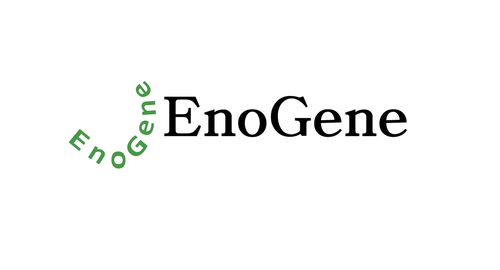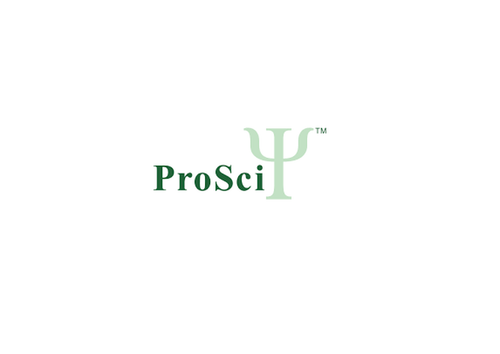Product Description
CAMSAP3 Antibody (N-term) [APR15246G] | Leading Biology
Product Category: Polyclonal Antibodies
Host: Rabbit
Species Reactivity: H, M
Specificity: This CAMSAP3 antibody is generated from rabbits immunized with a KLH conjugated synthetic peptide between 103-131 amino acids from the N-terminal region of human CAMSAP3.
Cellular Localisation: Cytoplasm, cytoskeleton. Cell junction, adherens junction. Cytoplasm Cytoplasm, cytoskeleton, cilium axoneme {ECO:0000250|UniProtKB:Q80VC9} Cytoplasm, cytoskeleton, cilium basal body {ECO:0000250|UniProtKB:Q80VC9}. Note=Scattered in the cytoplasm, associated with the minus-end of microtubules and also detected at the centrosomes (PubMed:19041755, PubMed:24486153, PubMed:27693509) Decorates the minus-end of microtubules by decreasing the rate of tubulin incorporation and remaining bound (PubMed:24486153) . Localizes along zonula adherens only at mature cell-cell contacts (PubMed:19041755) . In early embryos, accumulates at the microtubule bridges that connect pairs of cells: this structure is present in early embryos, which lack centrosomes (By similarity) . This cytokinetic bridge does not undergo stereotypical abscission after cell division (By similarity) . Accumulates to the pericentrosomal region following interaction with KATNA1 (PubMed:28386021) {ECO:0000250|UniProtKB:Q80VC9, ECO:0000269|PubMed:19041755, ECO:0000269|PubMed:24486153, ECO:0000269|PubMed:27693509, ECO:0000269|PubMed:28386021}
Molecular Weight: 134750
Clone: Polyclonal
Gene Name: CAMSAP3 (HGNC:29307)
Gene ID: 57662
Function: Key microtubule-organizing protein that specifically binds the minus-end of non-centrosomal microtubules and regulates their dynamics and organization (PubMed:19041755, PubMed:23169647) . Specifically recognizes growing microtubule minus-ends and autonomously decorates and stabilizes microtubule lattice formed by microtubule minus-end polymerization (PubMed:24486153) . Acts on free microtubule minus-ends that are not capped by microtubule-nucleating proteins or other factors and protects microtubule minus-ends from depolymerization (PubMed:24486153) . In addition, it also reduces the velocity of microtubule polymerization (PubMed:24486153) . Required for the biogenesis and the maintenance of zonula adherens by anchoring the minus-end of microtubules to zonula adherens and by recruiting the kinesin KIFC3 to those junctional sites (PubMed:19041755) . Required for orienting the apical-to-basal polarity of microtubules in epithelial cells: acts by tethering non-centrosomal microtubules to the apical cortex, leading to their longitudinal orientation (PubMed:27802168, PubMed:26715742) . Plays a key role in early embryos, which lack centrosomes: accumulates at the microtubule bridges that connect pairs of cells and enables the formation of a non-centrosomal microtubule- organizing center that directs intracellular transport in the early embryo (By similarity) . Couples non-centrosomal microtubules with actin: interaction with MACF1 at the minus ends of non-centrosomal microtubules, tethers the microtubules to actin filaments, regulating focal adhesion size and cell migration (PubMed:27693509) . Plays a key role in the generation of non-centrosomal microtubules by accumulating in the pericentrosomal region and cooperating with KATNA1 to release non-centrosomal microtubules from the centrosome (PubMed:28386021) . Through the microtubule cytoskeleton, also regulates the organization of cellular organelles including the Golgi and the early endosomes (PubMed:28089391) . Through interaction with AKAP9, involved in translocation of Golgi vesicles in epithelial cells, where microtubules are mainly non-centrosomal (PubMed:28089391) . Plays an important role in motile cilia function by facilitatating proper orientation of basal bodies and formation of central microtubule pairs in motile cilia (By similarity) .
Summary: N/A
Form: Purified polyclonal antibody supplied in PBS with 0.09% (W/V) sodium azide. This antibody is purified through a protein A column, followed by peptide affinity purification.
Storage: Maintain refrigerated at 2-8°C for up to 2 weeks. For long term storage store at -20°C in small aliquots to prevent freeze-thaw cycles.
Application: WB
Dilution: WB--1:1000
Synonyms: Calmodulin-regulated spectrin-associated protein 3, Protein Nezha, CAMSAP3, KIAA1543
 Euro
Euro
 USD
USD
 British Pound
British Pound
 NULL
NULL

![CAMSAP3 Antibody (N-term) [APR15246G] CAMSAP3 Antibody (N-term) [APR15246G]](https://cdn11.bigcommerce.com/s-452hpg8iuh/images/stencil/1280x1280/products/866009/1158076/logo__92149.1659788186__16731.1659862915.png?c=2)
![CAMSAP3 Antibody (N-term) [APR15246G] CAMSAP3 Antibody (N-term) [APR15246G]](https://cdn11.bigcommerce.com/s-452hpg8iuh/images/stencil/100x100/products/866009/1158076/logo__92149.1659788186__16731.1659862915.png?c=2)
![CAMSAP3 Antibody (N-term) [APR15246G] CAMSAP3 Antibody (N-term) [APR15246G]](https://cdn11.bigcommerce.com/s-452hpg8iuh/images/stencil/500x659/products/866009/1158076/logo__92149.1659788186__16731.1659862915.png?c=2)





![Dtnbp1 Antibody (N-term) [APR14102G] Dtnbp1 Antibody (N-term) [APR14102G]](https://cdn11.bigcommerce.com/s-452hpg8iuh/images/stencil/500x659/products/866731/1158798/logo__92149.1659788186__20744.1659863218.png?c=2)
![DHRS7 Antibody (N-term) [APR07576G] DHRS7 Antibody (N-term) [APR07576G]](https://cdn11.bigcommerce.com/s-452hpg8iuh/images/stencil/500x659/products/867311/1159378/logo__92149.1659788186__51909.1659863581.png?c=2)
![GSDMA Antibody (N-term) [APR05359G] GSDMA Antibody (N-term) [APR05359G]](https://cdn11.bigcommerce.com/s-452hpg8iuh/images/stencil/500x659/products/867329/1159396/logo__92149.1659788186__15797.1659863588.png?c=2)
![DSCR3 Antibody (N-term) [AMM06957G] DSCR3 Antibody (N-term) [AMM06957G]](https://cdn11.bigcommerce.com/s-452hpg8iuh/images/stencil/500x659/products/867646/1159713/logo__92149.1659788186__67879.1659863713.png?c=2)